Thomas R. Britt

Bodily destruction guides and binds many popular subgenres of violent cinema. From gialli[1] and international mondo[2] and splatter[3] films, to many Hong Kong works bearing the Category III rating,[4] to more recent films with the specious torture porn designation,[5] a common prevailing priority is to shock the audience through boundary-breaking acts of onscreen violence. Yet for all of their innovative attention to bloody atrocities, these strands of cinema often use reductive narrative techniques to string one death to another. In such films, merits of plot, structure, and extra- and subtextual significance are usually appreciated ironically and/or dismissed as unintentional. Just as Hollywood’s tired narrative formulas become predictable and unadventurous over time, even outsider violent cinema loses its spark if it fails to do anything but recycle its own well-worn tropes (however shocking they might have once been).
Gaspar Noé’s Irreversible (2002) and Takashi Miike’s Visitor Q (2001), on the other hand, represent a distinctive alternative to both mainstream Hollywood cinema and other films with a single-minded intention to shock. While their excessive content transgresses even further beyond mainstream taste than much of the cinema described above, their structural vigor and keen attention to processes of spectator perception and participation, buttress the films with a depth and unity that is missing from much of ‘shock cinema’. These works, as variations on the Orphic myth, use exaggerated corporeal violence in order to explore intense psychological and societal struggles.
At the center of these films are reactive heroes who hurtle towards death to reconcile the ruptures that have separated them from their objects of desire. That shared central dramatic action is the catalyst for the films’ most alternative quality, which is a rare blend of nihilism and humanism. Noé and Miike tap into an almost unbearable darkness as a means of hinting at the possibility of salvation. The films use physical violence to spiral outward towards a larger rumination on mortality rather than to simply link one bloody act to the next. This sense of development, crucially missing from the kinds of cinema outlined above, is also a departure from Hollywood horror, which arouses its audience through the promise of climactic violence but for several reasons-ratings restrictions, the dependence on making a profit, and the promise of additional box office money generated by sequels-safely avoids communicating anything meaningful about death. Eli Roth’s Hostel: Part II (2007), which simply exchanges the first film’s male victims for female victims in its gallery of homicide, is a sort of synthesis of both tired trends: a cynical cash-grab that fundamentally fails to develop as a narrative.
Both Noé and Miike use psychologically motivated narrative trajectories and aesthetic qualities, in addition to a focus on generative and restorative mother figures in order to explore fractures in romantic relationships and a decaying social fabric. The function of mother characters here is particularly radical when compared to Hollywood horror films, which readily exploit the whore and virgin characters but nervously avoid or insecurely misrepresent the mother’s role.[6] This combination of formal elements increases the impact of the strong violence and, in the process, evokes a sort of foreboding that acknowledges the inevitability of death but also suggests reversal and rebirth.
The inevitability of death is the conceptual starting point for Irreversible. A prologue introduces the phrase “time destroys everything,” and the plot sets forth in keeping with that expression. But Gaspar Noé’s narrative trick is that the film’s twelve scenes unfold in reverse order, from effect to cause. This reverse-causality puts the audience in a power position, aware of the brutal end that awaits the characters. The film opens on the last sequential event of the story: Marcus (Vincent Cassel) and his friend Pierre (Albert Dupontel) emerge from a gay club. Pierre is under arrest and Marcus is on a stretcher. As the subsequent scenes play out, the friends frantically search the club, a hellish, dungeon-like environment, for a character called Le Tenia (Jo Prestia). Pierre savagely murders the wrong man-someone he believes to be Le Tenia-after that man breaks Marcus’ arm. Later, a reluctant Pierre and an obsessed Marcus desperately look for the club and the audience eventually discovers the origin of Marcus’ rage, which is the rape of his girlfriend, Alex (Monica Bellucci).
Alex is the centerpiece of the film’s most infamous scene, which is a significant fulcrum for both the raw plot and the film’s rumination on death. She is introduced as beaten, bloody and on a stretcher, while the next scene reveals what brought her to this state. The extent of her wounds raises a number of possible causes, and the film responds to and realizes the spectator’s fears of those possibilities with the rape scene, as Le Tenia attacks her in an underground tunnel. After that scene, the film follows all of the key characters’ activities from earlier in the evening- though even the lighter moments are tainted by the unavoidability of the attack.
The post-classical narrative construction of Irreversible has the potential to distract the viewer who reads it as an excessive device. But since the reverse-order approach is consistently applied and clearly indicated from the pairing of the first two proper scenes, it is easy to grasp the concept and continue to engage with the other elements. Additionally, the psychological motivation for the structure, which tests the spectator’s response to violence and vengeance, elevates the intensity of the effect. In this manner, Irreversible is not merely a narrative about violence, but rather a violent narrative. This stands in contrast to a contemporary mainstream violent film like James Wan’s Saw (2004), in which the torturer/victim relationship plays out in one of two predictable ways: a potential victim becomes ensnared in a complicated situation of peril and must beat the odds to escape, or a detective (or detective surrogate) discovers an already expired victim and the film flashes back to reveal the method of death to the audience. Both such constructions treat death as a quasi-climax that excites but does not quite sate the spectator’s appetite for violence. Matthew Kieran writes:
In a culture increasingly tolerant of the appetite for violence, violent films may not only reflect but cultivate the delight taken in it. What is peculiar about films that indulge and revel in the gratuitous infliction of violence, and sadism generally, is the celebration of this delight. (122)
The serial plotting of Hollywood horror promises a continuing spate of murders, which lessens the impact of the individual moments of violence and extends the spectator’s search for delight. In Saw (as in the gialli and slasher traditions), the gravity and finality of death is undermined by the episodic narrative construction, which essentially renews the body with each fresh victim. As a result, the audience for these films fails to significantly experience the “negation of body” as it does while watching Irreversible (Krautheim 17). By frontloading the film with protracted violence, Noé structurally extinguishes the spectator’s desire. He does not seem to want to punish the viewer so much as reorient their relationship to screen violence, replacing pleasure with revulsion.
Noé connects his structural strategy to a visual one, which heightens audience identification. The film’s hero is Marcus, though his behavior (a revenge rampage) is probably outside of the mainstream viewer’s first-hand understanding. The visual elements, however, communicate Marcus’ experience by making the spectator feel what he feels, moment to moment. Of the constantly roving camera, Noé says, “It links me to [Marcus]… Although the guy has no philosophical depth in the film, his feelings are close to mine. I understand these brainless impulses-I would go for revenge in similar circumstances” (qtd. in Morrow 2).
The club at the beginning of the film is a location that evokes many traditional representations of the underworld. Screaming, spiraling dark passages, fire and torture, are just some of the sights and sensations Marcus confronts during his descent. The viewer does not have any context for the location or for Marcus’ his condition, but since the camera so powerfully and convulsively links them to his rage, they cannot keep any distance from him and his actions. To watch the film is to accompany Marcus and Pierre on their journey. The audience wants to know what brought these men to this point. But the fulfillment of the desire to know this information comes at a price: Marcus is nearly sexually assaulted and then his arm is broken at the elbow. In response, Pierre brutally pummels a man to death with a fire extinguisher.
To make the excess of this scene apparent, I will use Tim Merrill’s succinct description of the scene: “Blow by blow, under the force of the heavy canister, the man’s head actually breaks apart. His teeth cave in, his face cracks open, his skull shatters, his brains leak out. All this happens in one shot” (1). Because this action takes place so early within the narrative, viewers do not perceive it as the chronological climax of the film and do not recognize any legitimizing function for the extreme violence. And in keeping with the film’s hyper-articulated inversion device, only at the moment of violence does the camera calm down and allow the spectator to have an unimpeded view of the action. But while the audience’s connection to Marcus and Pierre’s predicament is more visceral than experiential, Noé’s choice to place them in a compromising position at the beginning of the film has telling implications for another of the film’s concerns, which is the polarization of male and female sexuality. Noé says, “I think having the male lead almost raped at the beginning, feminizes the male audience to a degree that they find challenging. And so, when they are then projected into the mind of a woman being raped, they can’t cope” (Morrow 2). This scene is therefore an extension of Noé’s reorientation of the spectator’s response away from arousal and towards identification with the victim.
The camera is again conspicuously still during Alex’s rape, another moment in which the audience becomes potentially complicit, as the voyeuristic composition feeds a desire for revenge. But since Noé has already purposefully conveyed the empty futility of revenge, this arousal is also false start. So the movement from the threat of male rape (effect) to the actuality of female rape (cause) appears to be part of Noé’s overall organizing strategy to move from the masculine to the feminine. Marcus and Pierre’s effort to avenge Alex’s rape plays out within a space entirely populated by males. The atmosphere of total destruction that Noé equates with the masculine space is never again present within the film. By design, most scenes that follow take place in transitional spaces: a car, a train, an elevator, and a tunnel. Warmth, stillness and lushness only enter into the film during the final scenes at Alex’s apartment, which fulfills that Levinasian notion of “the utopia in which the ‘I’ recollects itself in dwelling at home with itself” (Totality and Infinity 156).[7]
In contrast to this utopian domestic ideal Levinas describes, Visitor Q‘s protagonist is the patriarch of a family caught in a sort of physical and psychological apocalypse. The middle class home as a site of terror is a common motif of other strands of shock cinema, particularly the Category III Hong Kong films. And on a strictly surface level, Visitor Q does resemble Category III films such as Kai Ming Lai’s Daughter of Darkness (1993), the plot of which involves a family slaughter brought on by sexual abuse. Michael Atkinson, in “Extreme Noise Terror,” describes Visitor Q as “A shabby home-video visit with a ridiculously monstrous family unit [….] If Herschell Gordon Lewis had adapted O’Neill, it still wouldn’t out-thicken the muck of Miike’s anti-achievement” (1). But the mucky Visitor Q achieves more than exploiting the possible horrors of the home. Miike uses a disintegrating household to indict a Japan that is in dangerous flux and in need of an apocalyptic restoration. His reflexive use of a filmmaker as a lead character also brings the media into the scope of his criticism.
At the start of the film, Kiyoshi Yamazaki (Kenichi Endo) visits his daughter Miki (Fujiko) at a comfort house as part of his planned television documentary on sex and violence among youth. Kiyoshi proceeds to have sex with his daughter. He meets a stranger, Q (Kazushi Watanabe), who hits him over the head with a rock and follows him to his chaotic home. Keiko (Shungiku Uchida), Kiyoshi’s wife, is a heroin addict who prostitutes herself to support her habit. Takuya (Jun Muto), the son, physically and emotionally abuses his mother. Throughout, bullies assault Takuya and the family home. Visitor Q eventually transforms the family by awakening passions in each of them: Kiyoshi murders his nagging co-worker and defiles her corpse, Keiko discovers her lost maternity, and Takuya realizes that he should study more and stop abusing his mother. Finally, Kiyoshi and Keiko murder and dismember Takuya’s bullies and restore peace to the home, and daughter Miki returns to her family.
As is likely apparent from this summary of the film’s key events, transgression is the central point and preoccupation of Visitor Q. In the first half of the film, its checklist of taboos forms its very structure, as well as the method through which the excessive elements invite audience participation. An example of this is the line, “Have you ever done it with your dad?” which introduces the comfort house scene. Subsequent lines that are directed to the audience include, “Have you ever been hit on the head?” and “Have you ever hit your mother?” Miike’s engagement with fantasy here extends to both the characters and to the audience. In response to the questions, the characters act out these events onscreen, and Miike directs the audience members to recall their participation in such activities. Thus the spectator attempts to link actual events and images from his/her past to the imaginary events taking place on screen, much like the process Freud describes as “the hallucinatory revival of […] perceptual images” (367). As Visitor Q goes considerably further than Irreversible in its presentation of excessive activities, it also acknowledges the audience’s participatory role to a greater extent. While Miike seems to share Noé’s impulse to reorient the audience’s appetite for violence, he also opens up a kind of subjective spectatorship that involves Freud’s dream-regression into past experience-a merging of perception with participation.
As it relates to the text, this interactive formal strategy is in keeping with Kiyoshi’s goal (perhaps shared by Miike) to grapple with the problems of sex and violence in Japanese society. The character’s documentary project requires his partaking in the behavior, ostensibly to expose the problems to an audience. This occasionally places the film’s audience at an uncomfortable nexus similar to that of the rape scene in Irreversible. Miike de-eroticizes Miki’s body through a near constant stream of reminders that this is her own father taking advantage of her. As Kiyoshi progresses with his sexual act, he repeats, “This is no good” and “It’s our little secret.” But Kiyoshi’s obsession with documenting social problems does not seem to be accompanied by the awareness that his participation in the problems has destroyed his own sphere of society. Also, by shooting all of the footage (both the interior reality of Kiyoshi’s television shows and the exterior reality of the family at home) in home video, Miike foregrounds the interconnection between the two. The aesthetic doubling communicates Miike’s arguably moral concern that media exploitation of personal dysfunctions and misfortunes will create those very tribulations in the homes of its purveyors and consumers.
Miike’s critique, however, extends beyond just the media. Kiyoshi’s emasculation is in keeping with the Japanese mass media’s theory that “the paternal principle-law, discipline, independence, objectivity, the privileging of public virtues over personal desire and so on-has been greatly eclipsed in society at large” (Yoda 239). The purpose of Kiyoshi’s labour is, we assume, to restore order to his own life, but his actions are at odds with the paternal principle. His labour aims to understand and communicate the disintegration of Japanese culture, but he is instead absorbed by its most destructive tendencies. His attempt to ward off the threat of insignificance and absorption into maternal society has reached a sort of last resort: He turns the camera onto his wife and children, thus exploiting them as subjects and capitalizing on his disintegrating home.
This sort of exploitation should be familiar to anyone who has watched reality programming that punctuates its artifice and irresponsibility by loudly insisting upon its own authenticity and worth. In his pitch to his co-worker, Kiyoshi says, “It can’t get any more true than this. I’m the father. I mean, this is the real thing.” He later performs for the camera, documenting the moment when school bullies shoot fireworks into his home, addressing the audience: “How am I supposed to feel? I don’t know how a father should feel. But I know my family is being destroyed.” Again, this self-awareness might sound genuine, but it obviously is not profound enough to motivate Kiyoshi to put down the camera and defend his home and family.[8] So while Kiyoshi participates in his own destruction, the Visitor, Q, who might be a surrogate for the audience, encourages the wife, Keiko, to take the lead.
Keiko, whose track marks, scars and other wounds make her torment clear, finds Q in Miki’s room, which is presented as a restorative space free from the chaos that assaults the rest of the home. With Miki’s picture situated in the foreground, Q fondles Keiko’s breasts until she starts lactating. His caress awakens something resembling sexual ecstasy within Keiko, and she produces breast milk that showers the room. Son Takuya watches from the doorway. In another fresh recontextualization of the primal scene, this moment makes Takuya realize his mother is available to him again. His apparent mistrust of her falls away, and this is a breakthrough shared by the audience, assuming Miike’s images have provided a vivid enough hallucinatory revival. Additionally, this is a fulcrum within the narrative, because it is only after the past rupture is resolved that Keiko emerges as a force of reconciliation within the home.
The restoration of Keiko’s femininity is rearticulated later, when she produces a literal pool of breast milk in the kitchen and tells Q, “I realized something when you were holding me. I’m not a special woman or a pathetic woman. I’m just an ordinary woman.” This tender moment is crosscut with Kiyoshi defiling the corpse of his female co-worker who he murdered earlier for insulting him. At this perversely comic turning point, Kiyoshi becomes physically attached to the corpse and requires Keiko’s help. For the remainder of the film, Keiko exuberantly aids Kiyoshi’s project. They murder Takuya’s tormentors and dispose of the various bodies that have collected around them.
Despite all of these excesses-sadomasochism, incest, necrophilia, and dismemberment-Miike’s truly subversive stroke is to posit the maternal principle as the solution to Kiyoshi’s problem, and possibly the problems of society at large. As Steve Rose says, “Beneath the veneer of shock […] Miike’s films challenge Japanese identity […] Against traditional national values like honour, order and emotional restraint, Miike sets excess and exuberance” (1). The final shot of the film features Keiko cradling Kiyoshi and Miki at her breasts, nursing her husband and daughter. In this final tableau, Visitor Q explicitly promotes the mother as the site of restoration, where “the woman is the condition for recollection, the interiority of the Home, and inhabitation” (Levinas 155). Before I conclude, I will briefly counter-point the function of the mother specter in Irreversible.
Irreversible’s epilogue completes Noé’s movement from the destructive masculine to the restorative feminine by moving the narrative, for the first time, to a daytime exterior. In the final bedroom scene, Alex indicates to Marcus that she might be pregnant. When he leaves the space, she takes a pregnancy test and her reaction (a gesture towards her stomach) indicates that she is expecting a child. The final image of the film, a rotating overhead shot of mothers and children in a park, is fecundity writ large. This dual conclusion/origin further explains Marcus’ rage because the spectator realizes that it was not only Alex he was attempting to avenge at the beginning of the film, but rather infinity itself. By destroying the mother, Le Tenia has also obliterated Marcus’ discontinuous future. To illustrate this concept, I will turn to Levinas one last time:
The encounter with the Other as feminine is required in order that the future of the child come to pass from beyond the possible, beyond projects. This relationship resembles that which was described for the idea on infinity…The relation with such a future, irreducible to the power over possibles, we shall call fecundity. (267)
Arriving at a skewed humanism via a journey of total destruction, both films affirm the mother as the only one who has the power to usher in the future.
In conclusion, the fragile, discontinuous future of each protagonist is the basis for the secular eschatology that links these works. Through unique organizing formal strategies, Noé and Miike situate their characters on a spectrum of mortality and invite the spectator to also face the finality of death. Marcus and Kiyoshi confront the same central dramatic action-that of a man trying to recapture a partner without whom life spins out of control. True to form, the films’ radical resolutions offer no traditional narrative or emotional closure. Marcus, under a time that destroys everything, cannot reverse that which has interrupted his reproduction, and Kiyoshi is (perhaps literally) infantilized through the re-establishment of the maternal order. Finally, while many horror films conclude by testing the female lead’s odds at cheating death, the culminating focus on the mother in both Irreversible and Visitor Q draws attention to her essential ability to sustain life rather than to simply remain alive.
Neither film fits comfortably in the mainstream multiplex, nor do they belong in that diverse, disorganized filmic ghetto that houses exploitation films of all stripes. However, as critics, audiences and filmmakers continue to open up to the hidden pleasures of cult films from around the globe, it is also worthwhile to recognize films such as Irreversible and Visitor Q, which can be considered ‘alternative’ even to those bloody, sexy films that are seditious to the mainstream. These works occupy a third space by actively unifying excessive content with structural, visual and psychosocial depth.
Works Cited
Atkinson, Michael. “Extreme Noise Terror.” The Village Voice. 23 Apr. 2002. 21 Mar. 2008 <http://www.villagevoice.com/ 2002-04-23/film/extreme-noise-terror/>.
Freud, Sigmund. The Interpretation of Dreams. Sioux Falls: NuVision Publications, 2007.
Kieran, Matthew. Media Ethics: A Philosophical Approach. Westport: Praeger Publishers, 1997.
Krautheim, Graeme. “Aspiring to the Void: The Collapse of Genre and Erasure of Body in Gaspar Noé’s Irreversible.” Cinephile 4.1 (2008).
Levinas, Emmanuel. Totality and Infinity: An Essay on Exteriority. Pittsburgh: Duquesne University Press, 1969.
Merrill, Tim. “Irreversible.” Film Threat. 8 Mar. 2003. 23 Mar. 2008. <http://www filmthreat.com/index.php?section=reviews&Id=4195>.
Morrow, Fiona. “Gaspar Noé’: I’m not the Antichrist.” The Independent. 17 Jan. 2003. 26 Mar. 2008. <http://www.independent .co.uk/arts-entertainment/film-and-tv/features/gaspar-noeacute-im-not-the-antichrist-601899.html>.
Rose, Steve. “Blood isn’t that Scary.” The Guardian. 2 Jun. 2003. 3 Dec. 2007. <http://film.guardian.co.uk/interview/interviewpages/0,,968798,00.html>.
Yoda, Tomiko. “The Rise and Fall of Maternal Society: Gender, Labor, and Capital in Contemporary Japan.” Japan After Japan: Social and Cultural Life from the Recessionary 1990s to the Present. Ed. Tomiko Yoda and Harry Harootunian. Durham: Duke University Press, 2006. 239-271.
Notes
[1] The Italian giallo films shifted the pulp origins of their literary source material into associational, episodic showcases of violence. Examples include Sergio Martino’s Torso (1973) and Dario Argento’s Deep Red (1975).
[2] Mondo films, like gialli, are associated with Italian cinema because of Mondo Cane (1962), directed by Paolo Cavara, Gualtiero Jacopetti and Franco Prosperi. The pseudo-documentary subgenre expanded to include international titles such as Faces of Death (1978), directed by John Alan Schwartz.
[3] Onscreen gore is the hallmark of the splatter film, which was inaugurated by Herschell Gordon Lewis and popularized by Stuart Gordon and Lucio Fulci.
[4] Herman Yau’s The Untold Story (1993) and Ebola Syndrome (1996) typify the narrative elements of the non-softcore porn Category III films: infectious disease, domestic violence and dismemberment.
[5] See Eli Roth’s Hostel (2005) and Roland Joffé’s Captivity (2007).
[6] Rob Zombie’s 2007 remake of Halloween is an example of this tendency.
[7] The film’s concluding sequence connects the inviting apartment with a renewed Alex and pays honour to the regenerative power of the female without demanding that she be stereotypically ‘domestic’. Some critics of Levinas interpret him to suggest that the wife’s duty is to subserviently provide a comforting home for her husband.
[8] Kiyoshi here exhibits Kieran’s ‘celebration’ of the delight of violence.


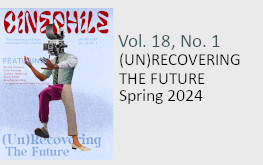
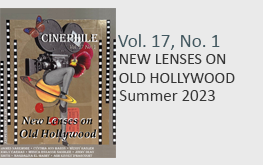
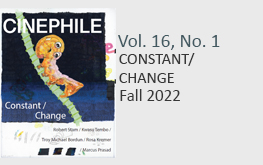
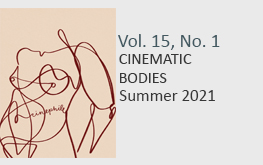
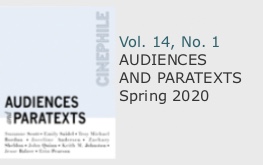
This looks like a really interesting article, if only you didn’t drop bombs like this one early on:
” Eli Roth’s Hostel: Part II (2007), which simply exchanges the first film’s male victims for female victims in its gallery of homicide, is a sort of synthesis of both tired trends: a cynical cash-grab that fundamentally fails to develop as a narrative.”
Wow — that’s so far off the mark I have to ask: did you even watch that film?
Chuck,
Thanks for your comment. I think Roth has done much more interesting work in other films. By no means am I part of that community of filmgoers that rejects him as a director altogether. However, the sequel to Hostel did not seem to have much on its mind in terms of narrative or any other sort of psychological/philosophical motivation. Roth is a capable director and is clearly a rabid horror fan, but Hostel: Part II is not his best work.
Thanks for reading.